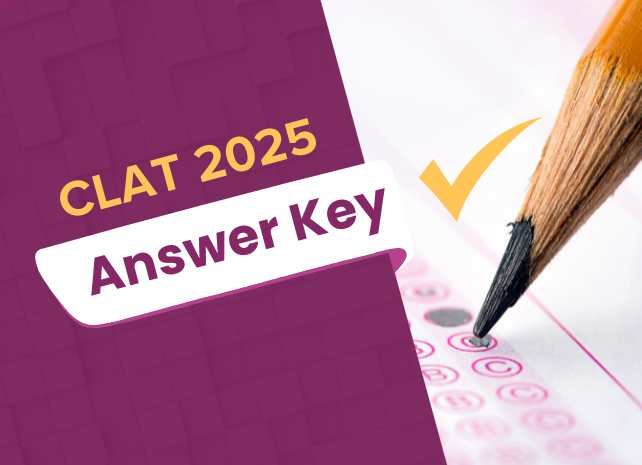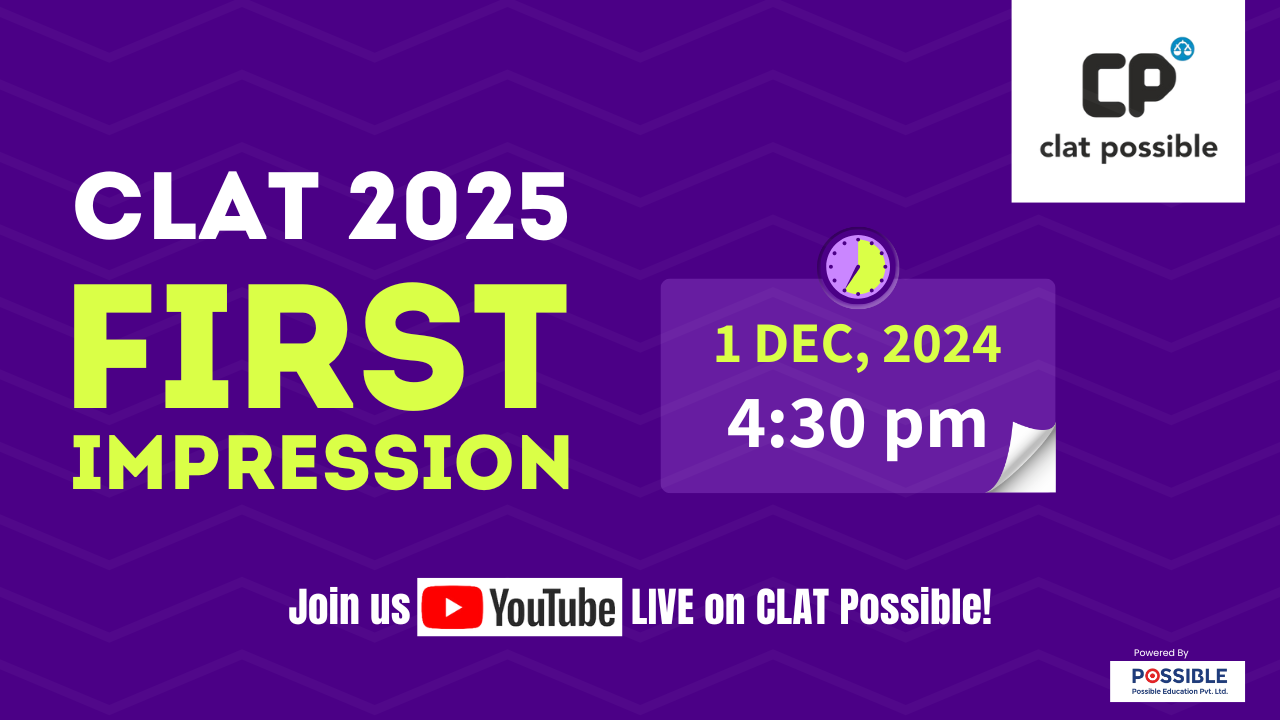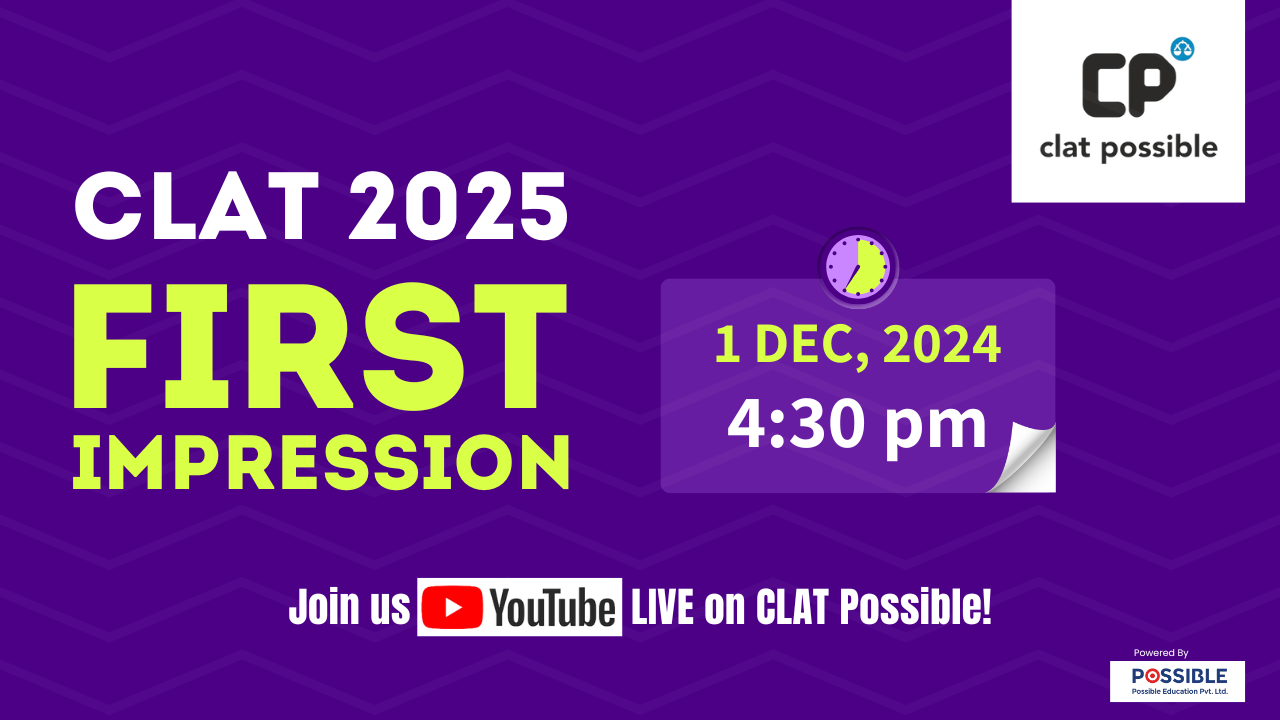The Common Law Admission Test (CLAT) is a crucial exam for aspiring law students in India. However, many students from regional language backgrounds face significant challenges due to language barriers, particularly in English. This article explores the importance of preparing for the CLAT with a focus on English language skills, the difficulties non-English speakers encounter, and effective strategies for overcoming these obstacles. By addressing these issues, we can foster a more inclusive environment for all CLAT aspirants.
Key Takeaways
- English skills are essential for success in the CLAT exam.
- Non-English speakers often struggle with comprehension and confidence during the exam.
- Improving English proficiency can be achieved through online resources and practice tests.
- Support from mentors and peers is vital for overcoming language barriers.
- Rural students face unique challenges but can find inspiration in success stories of perseverance.
Understanding the Importance of CLAT English Language Preparation
Why English Proficiency Matters in CLAT
English proficiency is crucial for success in the CLAT exam. The exam tests various skills, including reading comprehension, grammar, and vocabulary. Students who struggle with English may find it hard to understand questions and instructions, which can lead to poor performance. This is especially true for those from regional language backgrounds who may not have had adequate exposure to English education.
Impact of Language Barriers on CLAT Performance
Language barriers can significantly affect a student’s confidence and performance in the CLAT. Many students perceive the exam as more difficult due to their limited English skills. This perception can discourage them from even attempting the exam, leading to lower registration numbers compared to other entrance exams like JEE and NEET.
Strategies for Improving English Skills for CLAT
To overcome these challenges, students can adopt several strategies to improve their English skills:
- Engage with English media: Watching movies, reading books, and listening to podcasts in English can enhance comprehension and vocabulary.
- Practice with mock tests: Regularly taking practice tests can help students become familiar with the exam format and improve their time management skills.
- Seek help from mentors: Finding a mentor or joining study groups can provide support and motivation, making the preparation process less daunting.
Improving English skills is not just about passing the CLAT; it opens doors to better opportunities in the legal field and beyond.
By focusing on these strategies, students can build their confidence and improve their chances of success in the CLAT exam, ultimately leading to a more inclusive legal education landscape.
Challenges Faced by Non-English Speakers in CLAT
Limited Proficiency in English
Many students preparing for the CLAT come from backgrounds where English is not the primary language. This can lead to significant challenges in understanding the exam questions and instructions. Without a strong grasp of English, students may struggle to comprehend the legal terminology and complex passages, which can negatively impact their performance.
Cultural and Linguistic Comfort
For many aspirants, expressing themselves in their native language feels more natural. The fact that the CLAT is conducted solely in English can create discomfort and anxiety. This discomfort may discourage some students from even attempting the exam, fearing they will not perform well due to their language skills.
Translation Challenges
While the CLAT tests various skills, including legal reasoning and comprehension, translating these concepts into regional languages can be tricky. The nuances of legal language often get lost in translation, making it hard for non-English speakers to grasp the full meaning of questions. This adds an extra layer of difficulty for those who are not fluent in English.
Perception of Difficulty
The language barrier can lead to a perception that the CLAT is inherently more difficult for non-English speakers. This belief can deter students from applying, as they may feel at a disadvantage compared to their peers who are more comfortable with the language.
Overcoming these challenges is crucial for ensuring that all students have a fair chance at success in the CLAT.
Summary of Challenges
- Limited English proficiency affects comprehension.
- Cultural comfort is compromised by the English-only format.
- Translation issues can obscure legal concepts.
- Perception of difficulty may discourage non-English speakers.
By addressing these challenges, we can work towards a more inclusive environment for all CLAT aspirants, ensuring that language does not become a barrier to legal education and success.
The Role of English in CLAT’s Exam Structure
English Comprehension and Its Weightage
In the Common Law Admission Test (CLAT), English comprehension plays a crucial role. Understanding English is essential for answering questions accurately. The exam includes 22-26 questions specifically focused on English language skills, which account for a significant portion of the total score. This section tests not only vocabulary but also the ability to comprehend complex legal texts.
Legal and Logical Reasoning in English
The CLAT also assesses legal and logical reasoning through English. Candidates must interpret legal principles and apply them to various scenarios. This requires a strong command of the language, as the questions are designed to challenge the test-taker’s understanding of legal concepts presented in English. The ability to think critically in English is vital for success in this section.
Quantitative Techniques and Language
While quantitative techniques may seem unrelated to language, they are presented in English. Students must read and understand the questions before solving mathematical problems. This means that even in math, a solid grasp of English is necessary to interpret the questions correctly.
The importance of English in CLAT cannot be overstated; it is the foundation upon which students build their legal knowledge and reasoning skills.
In summary, English is not just a subject in the CLAT; it is the medium through which all other subjects are tested. Students from regional language backgrounds may find this challenging, but with the right preparation, they can overcome these barriers and excel in the exam. Here are some key points to remember:
- English comprehension is a significant part of the exam.
- Legal reasoning requires strong English skills for interpretation.
- Quantitative questions are also presented in English, necessitating language proficiency.
By focusing on improving their English skills, CLAT aspirants can enhance their overall performance and increase their chances of success in this competitive exam.
Overcoming Language Barriers: Strategies and Tips

Language barriers can be a major challenge for students preparing for the CLAT. However, there are effective strategies to help overcome these obstacles and improve English proficiency.
Utilizing Online Resources for English Improvement
- Online Courses: Enroll in online English courses that focus on reading, writing, and comprehension skills. Websites like Coursera and Udemy offer various options.
- YouTube Channels: Follow educational YouTube channels that provide lessons on English grammar and vocabulary.
- Language Apps: Use apps like Duolingo or Babbel for daily practice and to enhance your language skills.
Engaging in English Language Practice Tests
- Mock Tests: Regularly take mock tests to familiarize yourself with the CLAT format. This will help you understand the types of questions asked and improve your time management skills.
- Peer Study Groups: Join or form study groups with peers to practice English together. Discussing CLAT topics in English can boost your confidence.
- Feedback Sessions: After practice tests, review your answers with mentors or teachers to identify areas for improvement.
Seeking Support from Mentors and Peers
- Mentorship: Connect with mentors who can guide you through your preparation. They can provide valuable insights and resources.
- Family Support: Encourage family members to engage in English conversations at home to create a supportive environment.
- Community Engagement: Participate in local English-speaking clubs or forums to practice speaking and listening skills.
Remember, consistent practice is key to overcoming language barriers. With dedication and the right resources, you can enhance your English skills and excel in the CLAT exam.
By implementing these strategies, you can significantly improve your English proficiency, making the CLAT preparation process smoother and more effective. CLAT Possible offers various resources to assist you in this journey, ensuring you are well-prepared for the challenges ahead.
The Impact of Regional Language Backgrounds on CLAT Aspirants
Differential Access to Quality English Education
Students from regional language backgrounds often face significant challenges in accessing quality English education. In many parts of India, the availability of English language instruction varies greatly. This can lead to a lack of confidence among students when they attempt the CLAT, as they may not have had enough exposure to the language. As a result, many students feel unprepared and hesitant to take the exam.
Perception of Difficulty Among Non-English Speakers
For those who are not fluent in English, the CLAT can seem overwhelmingly difficult. This perception can discourage students from even attempting the exam. They may believe that their limited English skills will put them at a disadvantage compared to their peers who are more proficient. This mindset can lead to fewer registrations from these students, ultimately affecting their chances of pursuing a legal career.
Cultural Bias in Language Testing
The CLAT is conducted solely in English, which can create a sense of discomfort for students who are more comfortable in their native languages. This cultural bias can further alienate potential candidates, making them feel that the exam is not designed for them. Many students may find it easier to express their thoughts and ideas in their regional languages, which can hinder their performance in an English-only exam.
The challenges faced by non-English speakers in CLAT highlight the need for a more inclusive approach to legal education.
In summary, the impact of regional language backgrounds on CLAT aspirants is profound. Addressing these issues is crucial for ensuring that all students have equal opportunities to succeed in their legal education journey. By recognizing and tackling these barriers, we can help create a more diverse and inclusive legal profession.
Legal and Educational Implications of Language Barriers in CLAT
Constitutional Rights and Language Discrimination
The language barrier in the CLAT exam raises significant concerns regarding equal opportunity for all students. The Indian Constitution guarantees the right to education, yet many students from regional backgrounds face challenges due to the exam being conducted solely in English. This situation can be seen as a form of language discrimination, which may violate constitutional rights.
International Conventions on Education Equality
Various international agreements emphasize the importance of non-discrimination in education. For instance, the Universal Declaration of Human Rights states that everyone has the right to education. The lack of multilingual options in CLAT could be viewed as a failure to uphold these principles, potentially leading to legal challenges.
Legal Challenges and Public Interest Litigations
Recent public interest litigations have highlighted the need for CLAT to be conducted in regional languages. Such legal actions aim to ensure that students from diverse linguistic backgrounds can compete on a level playing field. The ongoing discussions around this issue reflect a growing awareness of the need for inclusivity in legal education.
Addressing language barriers in CLAT is not just about fairness; it’s about ensuring that every aspiring lawyer has the chance to succeed, regardless of their linguistic background.
Summary of Key Points
- Language barriers can hinder access to legal education.
- The Constitution and international laws support educational equality.
- Legal actions are pushing for multilingual options in CLAT.
In conclusion, the implications of language barriers in CLAT extend beyond individual challenges; they touch upon fundamental rights and the future of legal education in India. Ensuring that all students have equal access to opportunities is essential for fostering a diverse and inclusive legal profession.
Success Stories: Overcoming Language Barriers in CLAT

Inspiring Journeys of Non-English Speakers
Many students from non-English speaking backgrounds have faced significant challenges while preparing for the CLAT. However, their stories of determination and success are truly inspiring. These aspirants have shown that with hard work and the right resources, overcoming language barriers is possible.
Role of Perseverance and Determination
- Continuous Practice: Regular practice in English can greatly improve proficiency. Many students have dedicated time each day to read, write, and speak in English.
- Support Systems: Having a strong support system, including family, mentors, and peers, has been crucial for many students. They often share resources and motivate each other.
- Utilizing Online Resources: The rise of online platforms has provided students with access to a wealth of study materials and practice tests, making it easier to prepare for the exam.
Breaking Stereotypes and Achieving Success
Despite facing language barriers, many students have successfully secured admission in top National Law Universities (NLUs). Their journeys highlight the importance of resilience and adaptability. For instance, students have shared their experiences of overcoming initial fears and doubts about their English skills, ultimately leading to successful outcomes in the CLAT.
The journey of CLAT aspirants is filled with challenges, but with perseverance and the right guidance, they can achieve their dreams. Programs like CLAT Possible offer valuable support to help students navigate these hurdles effectively.
In conclusion, the success stories of these aspirants serve as a reminder that language should not be a barrier to achieving one’s goals in legal education. With determination and the right strategies, anyone can overcome these challenges and excel in the CLAT.
The Future of CLAT: Inclusivity and Language Diversity

Proposals for Multilingual CLAT Examinations
The future of the Common Law Admission Test (CLAT) is leaning towards inclusivity and diversity in language. Offering the exam in multiple languages could open doors for many aspiring law students. This change would allow students from various linguistic backgrounds to participate without the fear of language barriers.
Government Initiatives for Language Inclusivity
The government is recognizing the need for inclusivity in education. Some initiatives include:
- Encouraging regional language education in schools.
- Funding programs that support language training for students.
- Collaborating with educational institutions to develop multilingual resources.
Potential Impact on Legal Education Diversity
The shift towards a more inclusive CLAT could lead to:
- Increased participation from students who are not fluent in English.
- A more diverse legal profession that reflects the country’s linguistic variety.
- Enhanced access to legal education for underprivileged communities.
The move towards multilingual examinations is not just about language; it’s about creating equal opportunities for all students, regardless of their background.
In conclusion, the future of CLAT holds promise for a more inclusive approach that values language diversity. By addressing these barriers, we can ensure that every aspiring lawyer has a fair chance to succeed in their legal education journey. This is where institutions like CLAT Possible play a crucial role, providing tailored support to help students navigate these challenges effectively.
Comparative Analysis: CLAT and Other Entrance Exams
Language Options in JEE and NEET
The Joint Entrance Examination (JEE) and the National Eligibility cum Entrance Test (NEET) offer multiple language options for students. This inclusivity allows candidates from various backgrounds to take the exams in their preferred languages, making it easier for them to understand the questions and perform better. In contrast, CLAT is conducted solely in English, which can be a significant barrier for many aspirants.
Registration Trends and Language Barriers
The number of registrations for CLAT has been notably lower compared to JEE and NEET. For instance, in 2023, CLAT saw around 60,000 registrations, while NEET had approximately 21 lakh. This disparity can be attributed to the language barrier, as many students feel less confident in their English skills. Here’s a quick comparison:
| Exam |
Registrations (2023) |
Language Options |
| CLAT |
60,000 |
English only |
| NEET |
21,00,000 |
Multiple |
| JEE |
16,00,000 |
Multiple |
Lessons Learned from Multilingual Exams
The success of JEE and NEET in accommodating students from diverse linguistic backgrounds highlights the importance of language inclusivity. Here are some lessons that CLAT can learn from these exams:
- Implementing multilingual options: Allowing candidates to take the exam in their regional languages could increase participation.
- Providing resources in multiple languages: Offering study materials and practice tests in various languages can help bridge the gap for non-English speakers.
- Encouraging language proficiency programs: Initiatives to improve English skills among students can empower them to tackle the exam confidently.
By addressing language barriers, CLAT can enhance accessibility and ensure that all aspiring law students have a fair chance to succeed.
In conclusion, while CLAT remains a crucial exam for law aspirants, learning from the practices of other entrance exams can help it evolve and become more inclusive for students from all backgrounds. This is essential for fostering a diverse legal education landscape in India, where every student can thrive regardless of their linguistic background.
The Role of Coaching Centers in CLAT English Preparation
Coaching centers play a vital role in helping students prepare for the CLAT exam, especially in mastering the English language. These centers provide structured learning and expert guidance, which are essential for success in this competitive exam.
Availability of English Language Coaching
Many coaching centers offer specialized courses focused on improving English skills. These courses often include:
- Grammar and Vocabulary: Building a strong foundation in English.
- Reading Comprehension: Techniques to understand and analyze texts effectively.
- Mock Tests: Simulated exams to practice under real test conditions.
Effectiveness of Coaching in Language Improvement
The effectiveness of coaching centers can be seen in the success rates of their students. For instance, students from reputed centers often achieve higher scores in the English section of CLAT. This is largely due to:
- Personalized Attention: Smaller class sizes allow for more individual support.
- Experienced Faculty: Instructors with expertise in English and law.
- Comprehensive Study Materials: Resources tailored to the CLAT syllabus.
Challenges Faced by Rural Students
Despite the benefits, rural students often face challenges in accessing quality coaching. Some of these challenges include:
- Limited Resources: Many rural areas lack well-equipped coaching centers.
- Transportation Issues: Traveling to urban centers can be difficult and costly.
- Language Barriers: Students may struggle with English due to their regional language background.
The right coaching center can significantly enhance a student’s chances of success in CLAT, especially in overcoming language barriers.
In conclusion, coaching centers are crucial for CLAT aspirants, providing the necessary support and resources to excel in the English language and beyond. Choosing the right center can make a substantial difference in a student’s preparation journey, ultimately leading to better outcomes in the exam.
Coaching centers play a vital role in helping students prepare for the CLAT English section. They offer tailored lessons, practice tests, and expert guidance to boost confidence and skills. If you’re looking to excel in your CLAT preparation, visit our website to learn more about our programs and how we can help you succeed!
Conclusion
In conclusion, the Common Law Admission Test (CLAT) presents significant challenges for students who are not fluent in English. This language barrier can discourage many potential candidates from pursuing their dreams of studying law at prestigious National Law Universities (NLUs). Additionally, the high fees associated with these institutions further limit access for many middle-class families in India. To create a more inclusive and equitable educational environment, it is crucial to address these issues. Offering the CLAT in multiple languages, including Hindi and regional languages, could help level the playing field for all aspiring law students. By taking these steps, we can ensure that every student has the opportunity to succeed, regardless of their linguistic background.
Frequently Asked Questions
What is CLAT and why is it important?
CLAT stands for Common Law Admission Test. It is a key exam for students who want to get into law schools in India. Doing well in CLAT can help students secure a spot in prestigious law universities.
Why is English proficiency necessary for CLAT?
English proficiency is crucial for CLAT because the exam tests skills like reading comprehension and legal reasoning in English. Students who are not comfortable with English may find it hard to understand the questions.
What challenges do non-English speakers face in CLAT?
Non-English speakers often struggle with understanding the exam questions, which can hurt their performance. They may also feel less confident compared to students who are fluent in English.
How can students improve their English skills for CLAT?
Students can enhance their English skills by practicing reading and writing in English regularly, using online resources, and participating in language workshops or classes.
What is the exam pattern for CLAT?
CLAT consists of 120 multiple-choice questions covering subjects like English, current affairs, legal reasoning, logical reasoning, and quantitative techniques.
Are there any eligibility criteria for taking CLAT?
Yes, candidates must have completed their higher secondary education (10+2) with a minimum percentage. There are specific criteria for undergraduate and postgraduate courses.
How do language barriers affect CLAT registration numbers?
Many students may avoid registering for CLAT because they find it challenging to take the exam in English. This can lead to lower participation rates compared to other exams.
What support systems are available for CLAT aspirants?
Students can seek help from coaching centers, online platforms, and study groups. Support from family and mentors can also be very helpful in preparing for the exam.





























